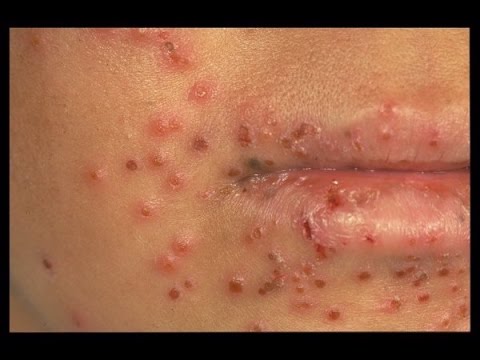Orf is a viral skin disease that can be spread to humans by handling infected sheep and goats.
The disease – caused by a parapoxvirus – is also known as:
contagious ecthyma
contagious pustular dermatitis
scabby mouth
Symptoms of orf
In humans, the first sign of orf is a small, red, itchy or painful lump (lesion) that usually appears on the fingers, hands, forearms or face after an incubation period of three to five days. In some cases there may be more than one lesion.
The lesion will usually be firm, red or blue in colour and 2-5cm in diameter.
As the condition progresses over a three- to six-week period, a pustule or blister that weeps fluid will develop on top and eventually crust over.
Other possible symptoms include a mild fever (high temperature), general tiredness (fatigue) and enlarged lymph glands.
How orf is spread
Orf is a zoonotic disease (zoonosis), which means it can pass between animals and humans. It’s not possible for humans to pass the virus on to each other.
The virus is spread by handling infected sheep or goats, infected carcasses, or contaminated material. Handling infected animals near their mouth is thought to increase the risk of orf.
People who make direct, close contact with infected animals are most at risk, including:
farmers
sheep shearers
vets
butchers
People with a weakened immune system (immunocompromised), open wounds, or other skin diseases are more likely to be infected with orf and should take extra care around affected animals.
The best way to prevent the spread of orf is to follow good hygienic practices when handling or rearing sheep and goats. This includes wearing protective gloves, good hand hygiene, and vaccinating animals at risk.
How orf is treated
Orf is a self-limiting disease, which means it will get better on its own without treatment. It usually clears up within three to six weeks.
It may be useful to cover the lesion with a sterile (hygienic) dressing and immobilise your finger to help reduce discomfort. Read more about applying plasters and other dressings.
You should see your GP if the lesion isn’t healing, you develop a fever (high temperature) or you’re in severe pain, as some people also develop a bacterial infection. This may require treatment with antibiotics.
In rare cases the lesion may not go away and a minor surgical procedure may be required to remove it.
Although there’s some evidence to suggest that using topical imiquimod cream may help to reduce lesions, you should speak to your GP or pharmacist for advice first.
Complications of orf
People with weakened immune systems are more likely to develop complications of orf – for example, people with HIV or lupus, or someone who is receiving chemotherapy.
Possible complications include:
larger or unusual lesions
widespread blisters
erythema multiforme – a large, red skin rash
bullous pemphigoid – a blistering skin disease (in rare cases)
